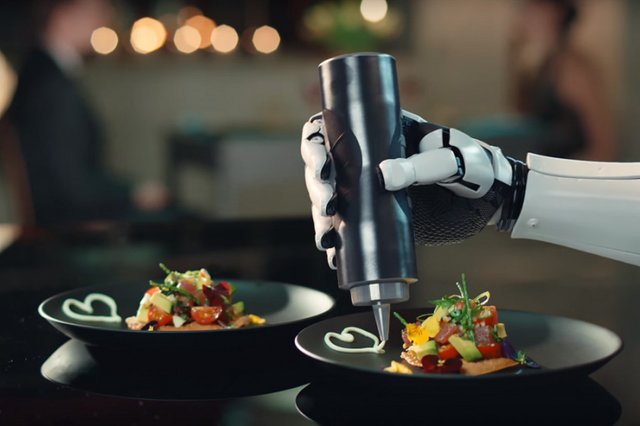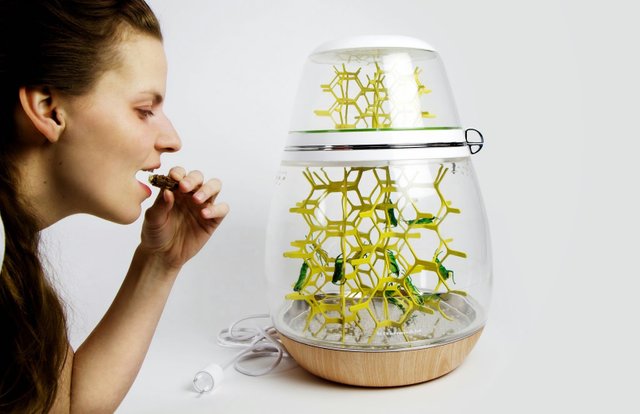The future! Food!

Humanity is destroying natural resources at an enormous rate. By 2050 there will be no chocolate left - cocoa beans simply will not have time to grow in order to keep up with the consumer.
Scientists at Memphis Meat and Mosa Meat want to grow stem cells and get real artificial meat with them! We will immediately reduce energy consumption for the production of real meat by 2 times, and we will also reduce the need for land resources by almost 100 times.
In January 2020, California-based startup Memphis Meats, about to start producing meat from animal cages, announced a $ 161 million investment. According to Forbes, Bill Gates was among those who invested in the company.
Memphis Meats will invest in launching a pilot production, expanding the team and entering the Asian market. The company has not yet announced the release date of its products.

In NASA, for example, a real golden fish fillet was grown. New Wave Foods is now trying to grow shrimp from algae!
Soylent is a powder consisting of all the elements that we need. Proteins, fats, carbohydrates, vitamins, amino acids, fiber, trace elements, etc. It can be considered a sports cocktail - except that it is intended for ordinary people.
By the way, about algae. These inhabitants of the underwater world produce almost more proteins, fats and carbohydrates than we are! What can we say about useful elements, for example, omega-3 acids.
Genetically modified foods are constantly becoming the subject of controversy. In any case, there is no long-term research on the benefits or harms of GMOs.

Although many fruits, nuts and fodder crops are perennial plants, the majority of crops that provide more than 70% of the human diet (primarily wheat, rice, corn) have to be re-planted every year, which requires many resource costs. Many scientists argue that it is possible to create perennial crops that require less fertilizer, herbicides and fuel (for cultivators) than annual crops, which will make world agriculture more sustainable. According to an article published by Science magazine, these varieties will be able to be bred in 20 years. Currently, work on the cultivation of perennial crops is underway in Argentina, Australia, China, India, Sweden and the United States.
STILL ON MAY 2013, NASA ANNOUNCES THE DEVELOPMENT OF 3D FOOD PRINT TECHNOLOGY. Its main idea is for astronauts to print ready-made mouth-watering dishes during long expeditions, instead of eating them from tubes. The original goal of a joint project between the space agency and the ambitious Texas engineering bureau was to make pizza using a 3D printer, and they got it.
A third of all the waste that we throw in the landfill is food packaging: boxes, bags and wrappers. 51-year-old Harvard bioengineer David Edwards found a solution. His brainchild, WikiCell, is an edible package for everything from soup and yogurt to alcohol.
Insect farms that outperform conventional ones in terms of area and cost are actively developing in the Netherlands and the USA. Among the individuals are crickets, wasps, locusts, caterpillars, grasshoppers, ants. Their meat is rich in protein and much cheaper than alternative types of meat from laboratories. Its introduction into the diet will help solve the problem of the meat industry too expensive for the planet.
Read also:
https://steemit.com/hive-175254/@dimav1246/the-future-of-social-networks-music
https://steemit.com/hive-175254/@dimav1246/the-future-of-social-networks-movie
https://steemit.com/hive-175254/@dimav1246/33xde2-the-future-of-social-networks
https://steemit.com/hive-175254/@dimav1246/the-future-education
As years goes by, we humans tend to consume junk foods much more than healthy food compared to the past
Too expensive and now difficult to transfer with the events we are seeing with the pandemic in the world. I have read many breakthroughs in the development of new, innovative types of food, I hope they focus on allaying the hunger in the world and not the need for space.
I loved reading this article, interesting with a new topic.
When I was in secondary school I remember having a conversation with my friends about what will happen when all the lands have buildings on them, thank goodness for these scientist who are thinking ahead.